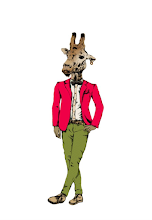This Nairobi-based Leo is turning to blogging as a necessary distraction
from the tragedy unfolding in Nairobi, but his prayers are with those affected.
Recently this Leo participated in helping a 14-year old Kenyan
(“our inventor”) attempt to secure IP rights after he had designed a system
useful in rearing domestic livestock as well as in wildlife conservation. At
our inventor’s request, and with the guidance of a local wildlife conservation
group, we prepared and filed a Utility Model Certificate application. So far,
the filing has been the beginning of a very curious experience.
 |
| Pondering a curious response to innovation (Curiosity, Patricia Pushaw) |
Around the same time that we filed the application, it
became clear that many other people had been installing very similar systems.
In fact, at least one organization seems to have been installing quite a number
of similar systems. It should be noted that aspects of our inventor’s system
had been widely published (with much fanfare) prior to our filing, so it is
very possible that such similar systems were in fact copies, inspired by the
prior publication.
When our inventor and the supporting wildlife conservation
group approached those making similar installations, the response ranged from
dismissive to downright hostile. People angrily replied in two ways: “how can
you patent something that will significantly help wildlife conservation?”
and/or “this invention cannot be patented because it’s been known for years.”
Both responses are irritating, albeit for different reasons.
Claiming that something shouldn’t be patented because it has
virtuous applications is not new but it’s also not fair. Kenyan patent law
doesn’t exclude humanitarian (animalitarian?) inventions, so why should we deny
such reward to the intellectual efforts of our inventor? In any case, animal
conservation has become quite the industry, particularly amongst NGOs and
eco-friendly tourist services, so why not encourage innovation just as it’s
encouraged in other industries?
The second response, that the invention cannot be patented
because it was known previously, is irritating for its arrogance. It brings out
the school-yard immaturity in me, instilling a burning desire to retort “Oh,
yeah? Says who?!” Seriously, though, any patent lawyer (including this one)
would have done a prior art search and would have known what sort of prior art
devices were in existence as s/he wrote the application. Armed with the search
results, it is the lawyer’s job to draft an application that will not be
anticipated by the art. Of course there is never a guarantee that an
application will become a patent, but a well-drafted application can often overcome
even the most damning (i.e., closely related) art.
Unfortunately such objections
have significantly discouraged our inventor, although perhaps the experience is
merely a good introduction for a teenager to the cutthroat world of adulthood.
How will this all turn out? It may take
years to know, considering that the Kenyan patent office will take at least 18
months to issue any Utility Model Certificate. When/if a Certificate is issued, then it is up to our inventor to decide how/whether he wants to enforce. In any case, this Leo only hopes that the experience will not discourage our inventor
from spending his long future ahead inventing and creating.







